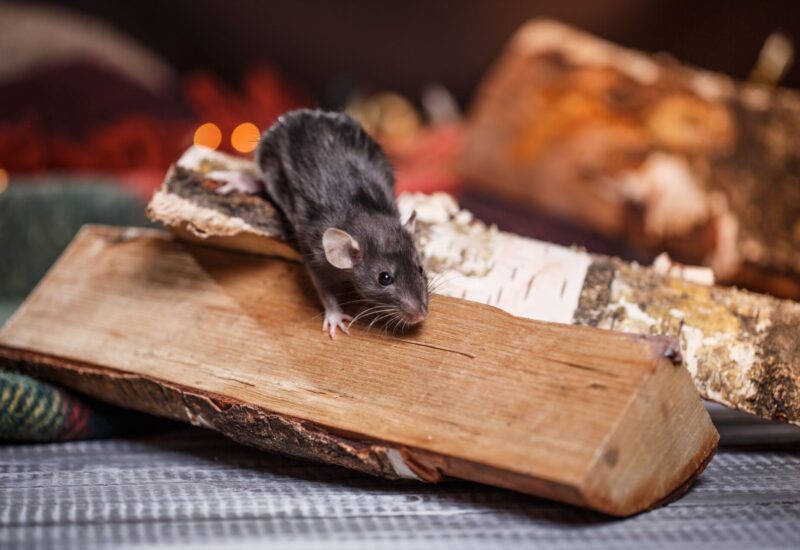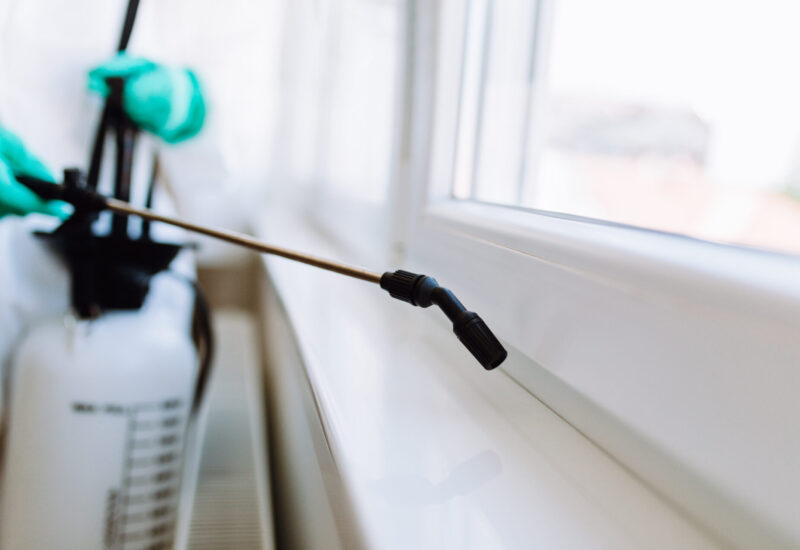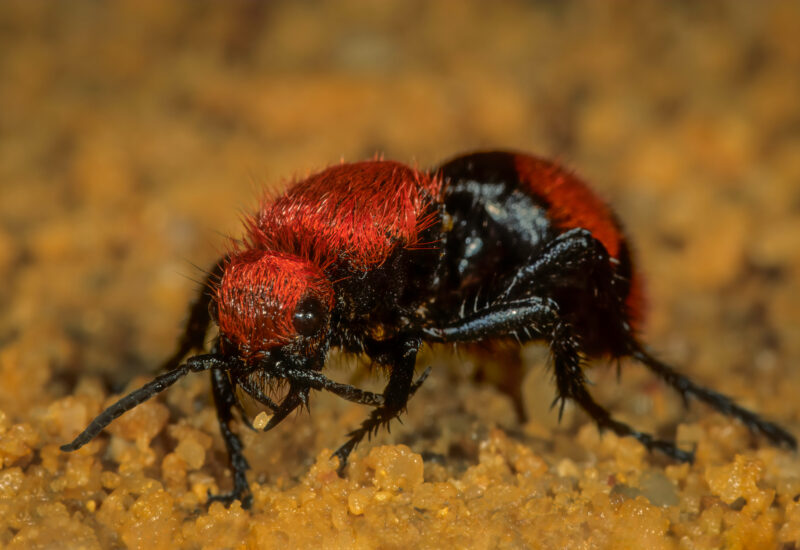Spring Lawn Care Tips in Florida

Maintain Your Lawn & Garden by Getting Rid of Lawn Pests
Spring has sprung in Southwest Florida.
While the dry season continues, the last half of April typically marks the beginning of the wet season throughout the state.
Florida residents can expect to continue irrigating their lawns regularly until the rains start in earnest.
The month of April also marks the start of our famous Southwest Florida heat (No, basketball fans — we don’t mean the Heat — not unless the team can squeeze into the playoffs and pull of some big wins against some tough teams).
Temperatures in Southwest Florida for this time of year can already reach up to the mid-90s. So, it’s important to keep an eye on your lawn and ornamental plants for signs of drought stress.
Florida Lawn Care & Irrigation Tips for Thriving Landscapes
Many of us know that each landscape can be different, so proper irrigation techniques can be confusing.
With that in mind, Catseye Pest Control has some suggestions that can help homeowners and business owners get the most from their irrigation system.
Lawns with Zoysia and Saint Augustine grass both require approximately 1.5 inches of water per week. If there are no major rain events upcoming, most of this will have to come from your irrigation system.
Landscapes benefit the most from irrigating during the predawn hours while plants are in the respiration phase and most open to water.
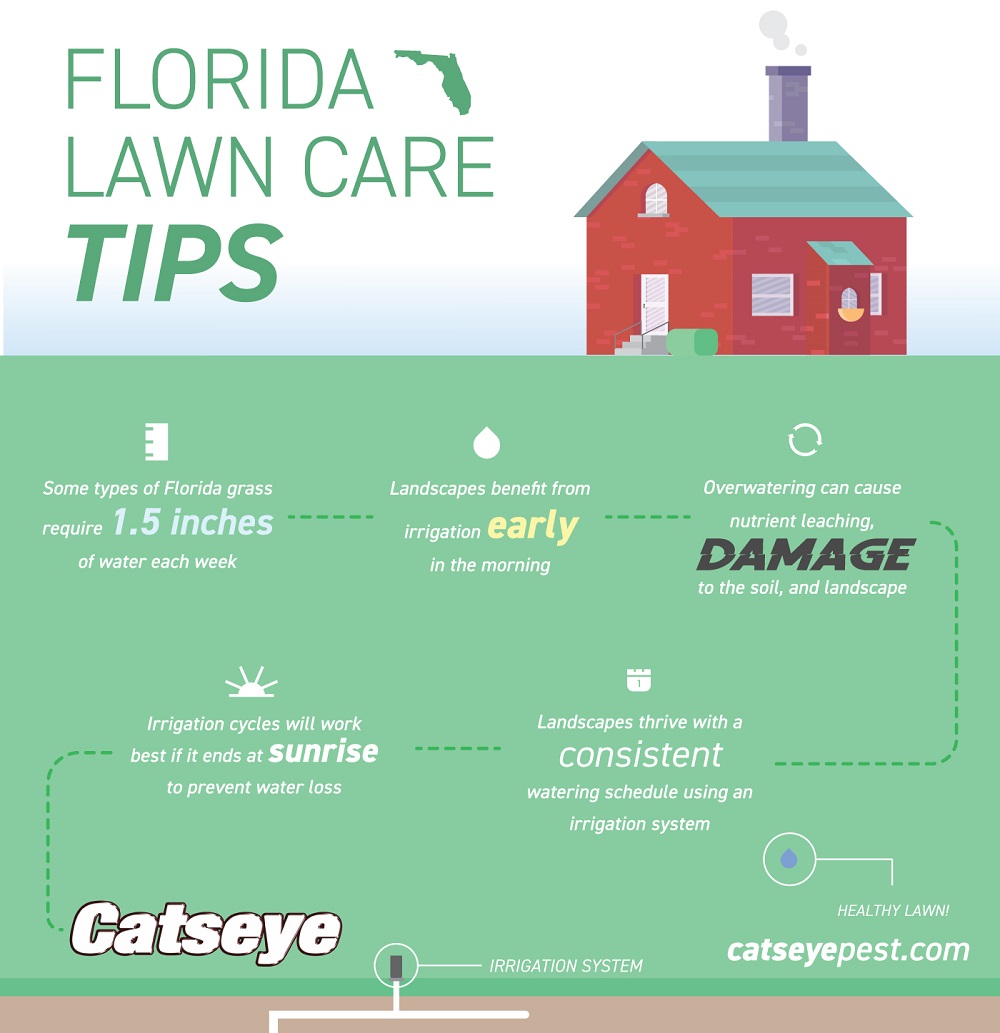
Irrigation cycles will work best if it ends just as the sun comes up to prevent water from being lost during the irrigation cycle. While at the same time using the sun to evaporate water left over after the cycle.
Zones using Mister irrigation systems should run for 25 minutes and those using rotors should run for 40 minutes twice a week. A three-day-a-week schedule running Misters for 15 minutes and Rotor irrigation systems for 30 minutes could work as well.
Never irrigate more than _ of an inch of water in a single irrigation cycle. This can be harmful to your lawn and can cause nutrient leaching of the soil, which your landscape needs right now as it moves out of the dormant season and starts growing in earnest.
If you would like an analysis of your irrigation system, contact our lawn maintenance experts today.
Our certified Irrigation Specialty Contractors can help your landscape thrive throughout the season.
Spring Gardening Tips
April is the start of spring and with that comes the planting season.
If you are considering making a change to your landscaping, now is the time to plant!
Ideally, Southwest Florida residents will want to incorporate heat-tolerant annuals and ground cover plants now in preparation of the coming heat.
Coleus, Vinca (also known as Periwinkle), and Portulaca are all excellent plant choices for this time of year. For our bulb lovers, Cannas are the way to go since there are new selections of colorful leaf and flower cultivars coming to market this year.
Herb gardeners can plant Basil, Coriander, Cumin, and Mint this month.
For the vegetable gardeners out there, beans, Chinese cabbage, Southern peas, and sweet potatoes are all excellent choices to start your spring garden.
Pest Spotlight: Oleander Caterpillar & Ghost Ants
This month, Catseye shines the spotlight a very important insect for lawns and gardens, the oleander caterpillar.
The oleander caterpillar is the larval stage of the polka dot wasp moth. This pest is seemingly harmless, except when it comes to plant life. The oleander caterpillar can quickly defoliate landscape plants, such as Oleanders and desert rose plants.
Look for a light orange-colored caterpillar with black hair along its back perched on the branches near leaves or on the plant leaves themselves.
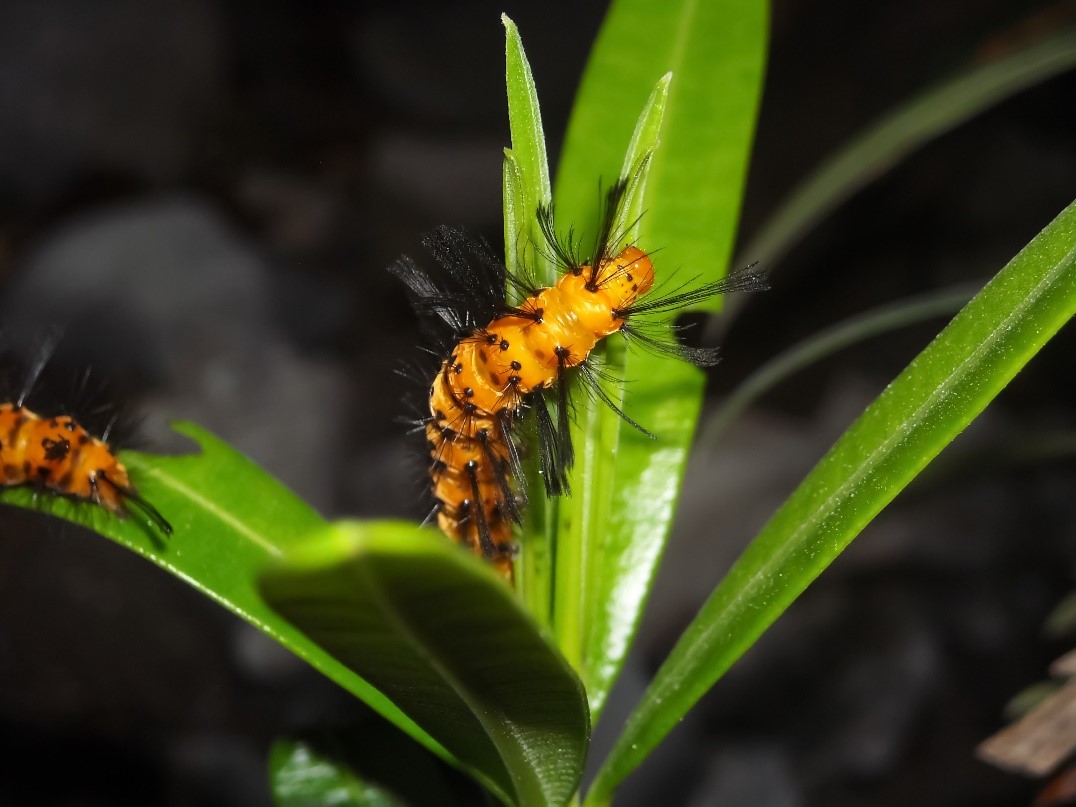
This invader is easily controlled, however, by pest management professionals.
So, if you see activity, contact our pest control specialists and we’ll be happy to handle the problem for you.
The second pest we’d like to spotlight this month will be familiar to just about any homeowner in Southwest Florida: ghost ants.
These pesky home invaders can be incredibly tenacious once they get established in your home.
With multiple breeding queens per colony and their habit of establishing multiple sub-colonies throughout an area, the removal of a ghost ant infestation can take a substantial amount of time and effort.
Ghost ant removal is best left to the professionals with the necessary knowledge and equipment for pest control services.
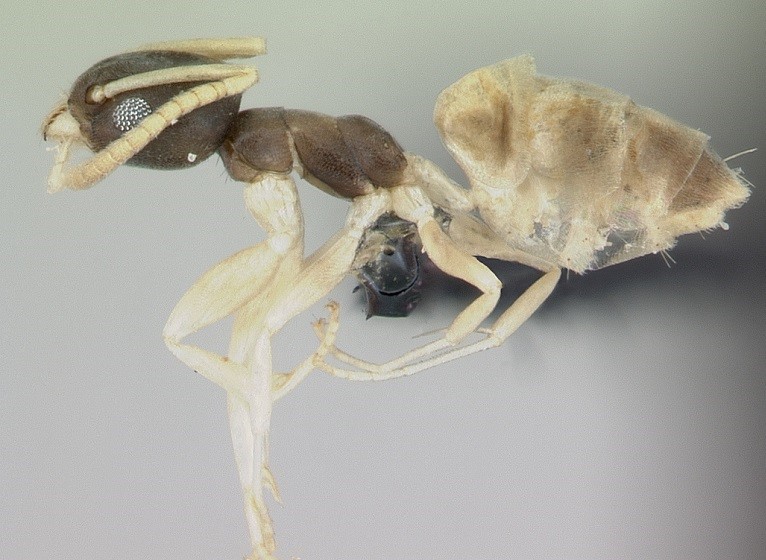
Ghost ants are well-known honeydew feeders. Honeydew is a sugary byproduct secreted by aphids while feeding on ornamental plants, damaging the plant and making it susceptible to viral, bacterial, and fungal invasion. These aphids are a tasty meal for ghost ants.
Ghost ants, like several home invading species of ants, will often maintain colonies of aphids feeding on their byproduct.
Fortunately, homeowners have another option in the fight against these bothersome pests.
Our Florida Lawn Care Services programs are specifically designed to target not only the ghost ant, but also stop the annoying aphids from feeding on those beautiful flowering plants — all the while enhancing the beauty of your plants.
If you have questions about our lawn care services for Southwest Florida and would like a free inspection, contact us today.


